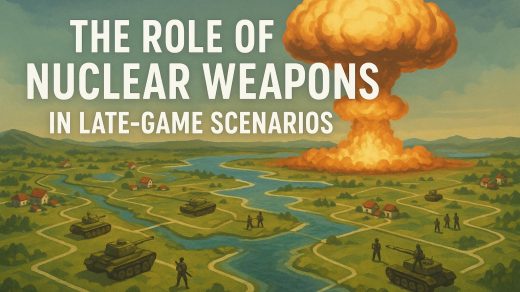Overview of Combat Mechanics in Empire Earth III
Empire Earth III, developed by Mad Doc Software and released by Sierra Entertainment, is a real-time strategy game renowned for its engaging combat mechanics which are designed to enhance the gameplay experience. By departing from the intricate complexities of its predecessors, the game opts for a more streamlined and accessible approach, without sacrificing strategic depth. In this analysis, we delve into the various combat mechanisms that are integral to the game’s framework, highlighting their significance and impact on gameplay dynamics.
Unit Classification and Types
In Empire Earth III, units are organized into three primary categories: land, naval, and air. Each category plays a crucial role in implementing strategic elements that align with different play styles, offering a unique set of advantages and challenges that evolve as the game progresses through its various epochs. Each epoch represents a distinct historical era, contributing to the diversity and complexity of units available to players over time.
Land Units
The foundation of any military effort in Empire Earth III lies in its land units. Encompassing a diverse array of infantry, cavalry, and siege weapons, land units are the backbone of terrestrial combat operations. The game offers mechanics for the customization and upgrading of these units as new technologies emerge within each epoch. This enables players to adapt and refine their strategies continuously, leveraging the evolving capabilities of their land forces to respond to changing battlefield conditions.
Naval Units
Naval units constitute a significant component of the strategic landscape, comprised mainly of ships and submarines. These units are indispensable for controlling maritime territories and engaging in sea-based warfare. Players aiming to exert dominance over naval domains must adeptly utilize these units to disrupt enemy trade routes, provide support for coastal land assaults, and secure strategic waterways. Mastery of naval units can significantly influence the game’s outcome, particularly on maps with substantial water features.
Air Units
Incorporating an aerial dimension to the strategy, air units offer unparalleled mobility across battlefields. They are adept at quick deployment, providing critical reconnaissance and tactical strikes against land-based adversaries. The rapid movement and wide operational range of these units afford players the ability to gather intelligence on enemy activities, conduct preemptive strikes, and exploit vulnerabilities within opposing forces. The strategic deployment of air units can tip the balance of power, especially when integrated effectively with land and naval operations.
Combat Mechanics and Formations
Empire Earth III introduces simplified yet profound combat elements to foster an intuitive gaming experience while maintaining the strategic depth players appreciate. This balance is achieved through meticulous use of formations and the distinctive behaviors of units.
Unit Formations
Formation is a pivotal aspect of military tactics in Empire Earth III. Players have the ability to organize units into various formations, each conferring specific tactical benefits. Distinct formations can influence combat effectiveness, impacting factors such as maneuverability, attack potency, and defensive resilience. The ability to select and adjust unit formations in response to battlefield scenarios provides players with tactical flexibility, underscoring the importance of strategic formation management in altering the course of battles.
Unit Morale
An essential yet often understated aspect of combat is unit morale. The morale of a unit significantly affects its combat performance; high morale amplifies a unit’s fighting capabilities, while low morale can precipitate diminished operational efficiency and even retreat. Effective morale management encompasses strategic positioning, successful offensive maneuvers, and the integration of supportive units, all of which play vital roles in sustaining a formidable fighting force. Attentive morale management thus becomes a critical component of overarching strategic objectives.
Environment and Terrain Influences
Empire Earth III meticulously incorporates environmental factors, allowing terrain to play a crucial role in combat dynamics. Terrain influences movement rates, visibility range, and defensive positioning, offering strategic advantages or imposing limitations. By exploiting terrain features such as hills, forests, and water bodies, players can devise tactical plans that capitalize on these natural amplifiers to optimize their battle strategies.
Conclusion
Empire Earth III’s combat mechanics, though simplified compared to earlier installments in the series, deliver a comprehensive and engaging strategy experience. By focusing on a range of elements including unit types, strategic formations, morale management, and environmental exploitation, players can devise intricate strategies that deploy diverse expressions of military prowess. These dynamic elements not only enrich the game’s strategic depth but also cater to a wide spectrum of player preferences and tactical inclinations. Embracing these mechanics enables participants to craft well-rounded military strategies capable of securing victory in the contest for supremacy. For further insights and community discussions around these topics, exploring online forums and sites dedicated to Empire Earth III can offer valuable perspectives and tips from fellow enthusiasts.
This article was last updated on: August 21, 2025






Recent Comments